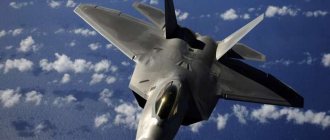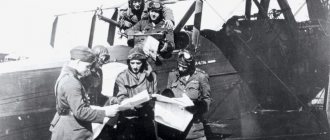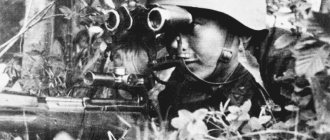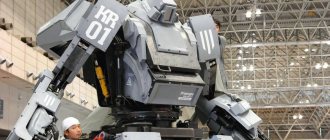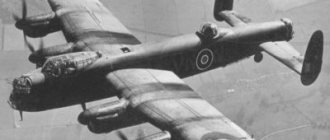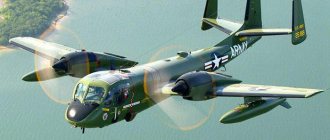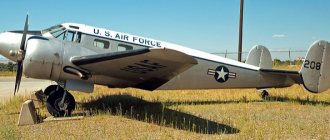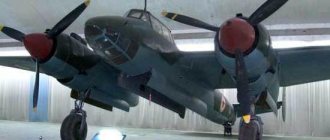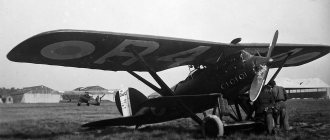Since the first use of aircraft on the field of military confrontation, their role in battle has become larger every year. The importance of aviation in military conflict has grown especially dynamically over the past 30-50 years. Every year, combat aircraft receive more and more advanced electronic systems and more powerful weapons. Their speed and versatility increases, while their radar signature decreases. Modern aviation can single-handedly decide the outcome of a military conflict, or influence it in a key way. In the military history of past years, such a thing could not even be thought of. Today we will find out what modern combat aviation is and what aircraft are at the forefront of domestic weapons.
The role of aviation
In the Yugoslav conflict, NATO aircraft resolved the situation with virtually no intervention from ground forces. The same can be observed in the first Iraqi campaign, when the Air Force ensured the final defeat of Saddam Hussein's army. Having destroyed the air force, US and allied aircraft destroyed Iraqi armored vehicles with impunity.
Modern military aircraft are so expensive that only wealthy countries can afford to develop and build them. For example, the latest generation American F-22 fighter costs about $350 million. Today, this military aircraft is a real crown of scientific and technological progress.
Northrop B-2 Spirit - the most expensive aircraft
One of the best military aircraft is the Northrop B-2 Spirit. It was also included in the Guinness Book of Records as the most expensive aircraft. To create one such winged aircraft, the US government had to spend $2.1 billion, and the entire program to create effective military bombers required an investment of $44 billion.
Northrop B-2 "Spirit"
The United States first started thinking about creating the Northrop B-2 Spirit in 1979. The development of the aircraft was initiated by President Ronald Reagan at the height of the Cold War. The heavy bomber first flew in 1989. Today, the United States has 21 Northrop B-2 Spirits in service. Each model is named after a geographic location, and the first aircraft was called the “Spirit of America.”
Current state of aviation
Today, all leading powers are concerned with the development of a fifth-generation fighter. America is an exception, since it already has such aircraft in its arsenal. These are the F-22 and F-35 models. They have successfully passed all tests a long time ago, went into mass production and were put into service. Meanwhile, China, Japan and Russia are lagging somewhat behind America.
At the end of the twentieth century, the Soviet Union went toe-to-toe with America. The fourth generation Mig-29 and Su-27 aircraft were not inferior to the American F-15 and F-16 models. However, when the USSR collapsed, hard times came for military aviation. For many years, Russia suspended work on creating new fighters. America, meanwhile, was actively developing its aviation, and in 1997 the F-22 aircraft was already created. It is noteworthy that this model is prohibited from being sold to other countries, and even allies. For them, based on the F-22, American designers created the F-35 aircraft, which, according to experts, is inferior to its prototype in many respects.
Airbus A300-600ST Beluga
An Airbus jet aircraft designed to transport large cargo. Only 5 units produced. The volume of the transport compartment is 1400 m³, length 37.7 m, width 5.43 m. The fuselage has a diameter of 7.4 m. The dimensions allow the Airbus A300-600ST Beluga to transport wings or body parts of the company's future aircraft. The total transported weight is 47 tons.
Large aircraft are used in civil, transport and military aviation to transport massive or heavy cargo and many passengers. They have been in operation in leading countries of the world for decades. New modifications with improved characteristics are also being developed.
Russian response
Modern Russian aviation can counterbalance American successes primarily with the modernized Mig-29 and Su-27 models. To mark their military affiliation, workers in the military industry even came up with a separate classification. The Mig-29 and Su-27 aircraft belong to the “4++” generation. This suggests that they are just a little short of being able to claim a place in the fifth generation. And this is not at all an attempt to “flex your muscles.” The planes are really good. The latest versions have improved engines, new electronics and navigation. However, this is not yet the fifth generation.
PAK FA aircraft
In parallel with the modernization of the good old fighters, the Russian aviation industry was working on a true representative of the fifth generation. As a result, such an aircraft was developed. It is called PAK FA, which stands for “advanced aviation complex of front-line aviation.” The second name of the model is T-50. Its futuristic shape is similar to the American flagship. The model first took to the air back in 2010. Today it is known that the aircraft is being finalized and will soon go into mass production.
Before comparing the T-50 with its American counterpart, let's find out what requirements modern fifth-generation aircraft must meet. The military absolutely clearly outlined the main advantages of this technology. Firstly, such an aircraft has a low level of visibility in all wave bands. First of all, it should not be detected in the infrared and radar range. Secondly, a 5th generation fighter must be multifunctional and extremely maneuverable. Thirdly, such a device is capable of going to supersonic speed without afterburner. Fourthly, it can conduct all-aspect fire and fire missiles over a long range. Well, fifthly, modern military aircraft are necessarily equipped with “advanced” electronics, which can significantly alleviate the pilot’s lot.
The PAK FA aircraft, compared to the American F-22, has larger dimensions and a larger wingspan, therefore, it will be a little more maneuverable. The T-50 has a slightly higher maximum speed, but a lower cruising speed. The Russian fighter has a longer practical range and a lower take-off weight. However, in terms of stealth, it loses to the “American”. Modern aviation is famous not only for its weapons and aerodynamics; electronics play an important role, on the operation of which the vital functions of all aircraft systems depend. Russia has always lagged behind in this regard. The onboard equipment of the PAK FA model also leaves much to be desired. Small-scale production of the aircraft was launched in 2014. The full production of the model should begin soon.
Now let's look at other Russian aircraft that show great promise of success.
Special aircraft
T-411 CX
In agricultural aviation, the most popular aircraft in Soviet times was the An-2 biplane, popularly called the “corner”. It was used to spray fertilizers and pesticides. It was replaced in Russia by modern agricultural aircraft: A-31 SPECTRUM, AVIATIKA-MAI-890SH, IL-103SH, SU-38, etc. These aircraft consume much less fuel and are equipped with modern equipment for cultivating fields. Some models, for example, T-411СХ, are multi-purpose. And in addition to processing, they can be used as sanitary, for patrolling, reconnaissance and other purposes.
There are ambulance planes to provide emergency medical care, fire fighter planes to extinguish fires, and postal planes to deliver mail. Geological exploration, sports, training and experimental aircraft have also been created.
Su-47 (Berkut)
This rather interesting model was developed at the Sukhoi Design Bureau. To date, it is still only a prototype. Thanks to the forward-swept wing, the vehicle has excellent maneuverability and new combat capabilities. Composite materials are widely used in the Berkut hull. The model was created as a prototype of a 5th generation fighter. However, it still does not meet the requirements for such aircraft. The Su-47 cannot reach supersonic speed without turning on the afterburner. In the future, the designers intend to solve this problem by installing a new engine on the aircraft. The first flight of the Berkut took place in 1997. One copy was created, which is still used as a test aircraft to this day.
Boeing 747 LCF (Dreamlifter)
A cargo model developed on the basis of the Boeing 747. It is intended only to transport parts for the assembly of aircraft of this company, which are produced by suppliers. A total of 4 copies were made. The machine is 71 m long, 21 m high, more than 8 m wide. It can lift and transport a load of 113 tons.
Su-35
This is a new aircraft, which, unlike the previous one, has already entered service with the Russian Air Force, in the amount of 48 copies. The model was also developed at the Sukhoi Design Bureau. It belongs to the 4++ generation, but in terms of its technical and combat parameters it almost claims to be in the fifth generation.
The plane is not much different from the T-50 model. The main difference is the absence of Stealth and AFAR (active phased array) technologies. The aircraft is equipped with the latest information and control system, a thrust-vectoring engine, and a reinforced airframe. The Su-35 fighter is capable of reaching supersonic speed without activating afterburner. With the proper pilot skills, the aircraft can withstand the American F-22 aircraft on the battlefield.
Passenger aircraft
Boeing 747
Modern aircraft are almost no different in appearance from those that carried passengers in the 60s of the twentieth century, when the first supersonic aircraft appeared - the Soviet Tu-144 and the Anglo-French Concorde. All of them have a classic aerodynamic shape, a similar tail unit, and are equipped with two or four turbojet engines. Engines are constantly being improved to reduce fuel consumption and noise levels. Due to the use of new materials, the design of the aircraft has been significantly simplified. Airliners are designed to ensure the highest flight safety.
Tu-144
Among passenger aircraft, the largest dimensions are wide-body airliners, which are called Airbuses. The length of their fuselage is 70 m or more, and the width is 5-6 m. The cabin can accommodate up to 10 passenger seats in a row, between which there are 2 aisles. Wide-body aircraft such as the Boeing 747 and A380 have 2 decks for passengers. And the Airbuses A300, A310, A330, Boeing 767, 777, Il-86 and Il-96 are single-deck. These aircraft are used for long-distance flights. They can take up to 840 people on board.
IL-86
Narrow-body aircraft are more common, the fuselage diameter of which does not exceed 4 m. There is 1 aisle between the seats in the cabin. Such aircraft include Airbus A320, Boeing 737, Il-62, Tu-154, Tu-134, Tu-204, Il-18 and others. The maximum capacity of the Boeing 757 is 289 people.
Aircraft with even smaller dimensions are used for transportation over distances of up to 2-3 thousand km. Such aircraft include the Russian Yak-40 and the Ukrainian An-24.
Yak-40
Strategic bomber
Today, the Tupolev Design Bureau is working on the creation of a new strategic bomber that will replace the Tu-95 and Tu-160 models. Development began back in 2009, but only in 2014 did the design bureau sign a contract with the Ministry of Defense. There is no exact information about the characteristics of the model yet, we only know that it will be subsonic and will be able to be more heavily armed than the Tu-160 aircraft. It is assumed that the new bomber will be a flying wing design.
The first car, according to the designers' forecasts, will see the light of day in 2020, and five years later it will go into mass production. The Americans are working on the creation of a similar aircraft. The Next Generation Bomber project is developing a subsonic bomber with a low level of visibility and a long range (about 9000 km). According to media reports, such a machine will cost America 0.5 billion dollars.
Hughes H-4 Hercules
A flying boat, for the construction of which birch was used. Developed by Hughes Aircraft in the 1940s. The weight of the vehicle was 136 tons. For a long time (until 2022), the Hughes H-4 Hercules remained the leader in wing length. It was expected that it would transport 750 fully equipped troops.
The Hughes H-4 Hercules made only one test flight in 1947, and was in reserve until 1976. It was then placed in the Long Beach Museum in California. Since 1993, it has stood as an exhibit in the aviation museum in Oregon, where it is visited by 300 thousand tourists a year.
Transport aircraft Il-112
The Ilyushin design bureau is currently developing a new light transport aircraft that will replace the outdated An-26 models used by Russia to this day. The contract between the Ilyushin Design Bureau and the Russian Ministry of Defense was signed in 2014, but work on the creation of the vehicle has been going on since the 90s.
IL-112 should go into mass production in 2022. The device will be equipped with a pair of turboprop engines. Its carrying capacity will reach up to six tons. It is noteworthy that the aircraft will be able to take off and land not only on equipped runways, but also on unpaved airfields. In addition to the cargo version, the designers also plan to build a passenger modification of the device. According to its creators, it will be able to operate on regional airlines.
An-124 "Ruslan"
Soviet and Ukrainian transport aircraft with a large payload and flight range. Belongs to the 4th generation. Over the course of 20 years of production, 55 units were built, partly in the Russian Air Force, and in operation by cargo companies in the Russian Federation and Ukraine. The An-124 Ruslan can accommodate up to 440 paratroopers or 880 fully equipped soldiers.

